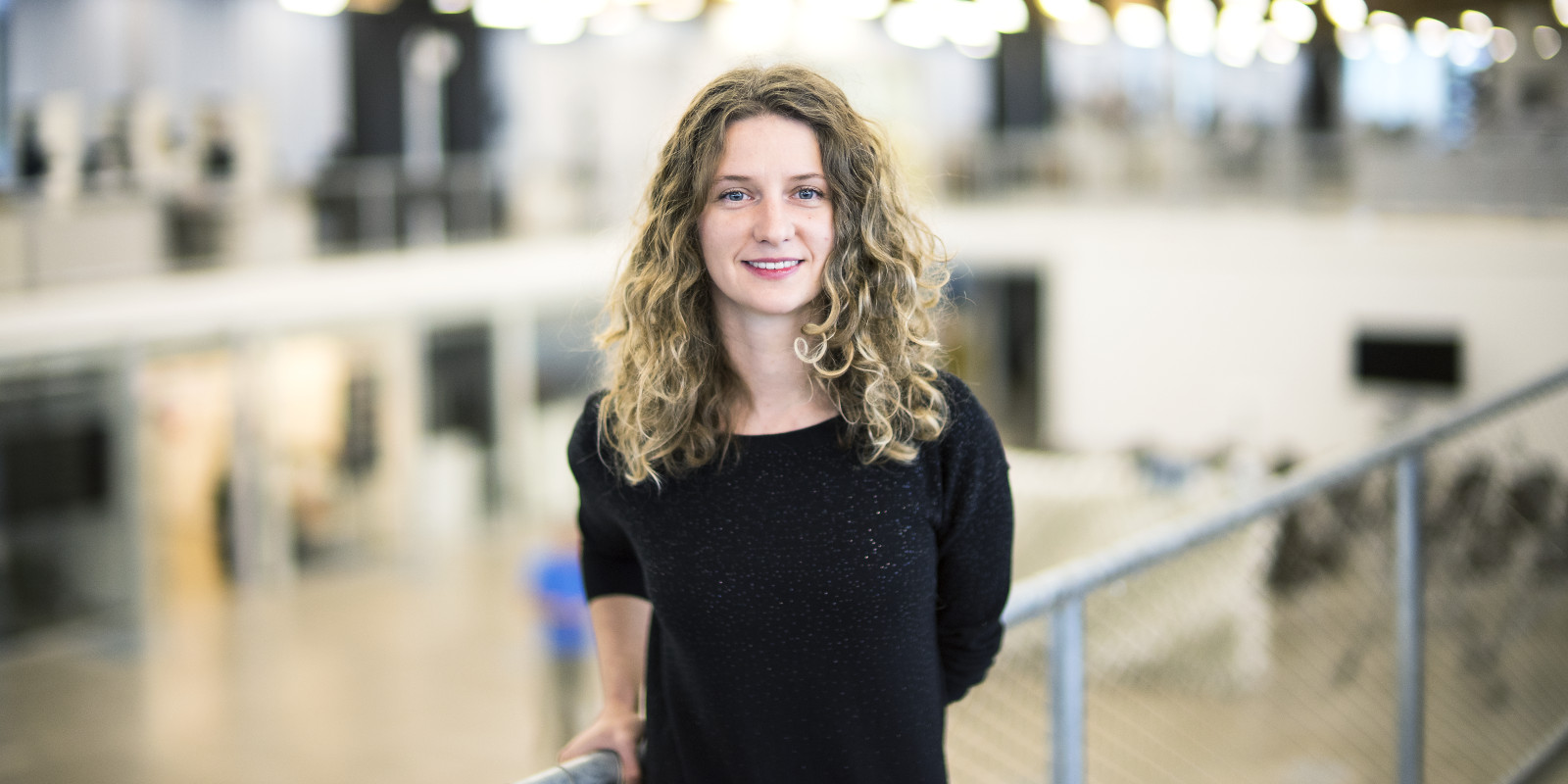Knitting concrete for buildings
For her doctoral thesis at ETH Zurich, Mariana Popescu developed a novel method to create a low-cost, lightweight and more sustainable formwork system for concrete structures. Her method using machine-knitted technical textiles has led to the young architect being included in the prestigious global list of “Innovators under 35”.

To grasp the nature of Mariana Popescu’s work, we first need to ditch some preconceived ideas. Although the architect uses knitting techniques, the end product is far removed from the traditional image of socks or pullovers. “We want to make it easier to construct complex concrete structures,” Popescu says.
Overcoming the constraints of conventional building methods
Standard concrete construction methods generally involve unwieldy moulds or formwork into which freshly mixed concrete is poured. Making this formwork is very costly and time consuming, especially for more complex geometric shapes. On top of that, the heavy weight of these assemblies causes considerable material wear. “As part of the NCCR Digital Fabrication project, we are trying to rethink building techniques and break free of traditional construction constraints,” Popescu explains.
The 32-year-old architect was born and raised in Romania. She studied at Delft University of Technology in the Netherlands. “My parents did their masters in Delft, and the university has an excellent reputation for architecture,” Popescu comments on her choice of studies. Both her parents are structural engineers, which is perhaps why she has always been attracted more to the technical than the aesthetic or artistic aspects of architecture. In any event, she became interested in digital tools and programming early on in her studies. “A completely new field came into being which I somehow slotted into,” Popescu says.
Thinking outside the (professional) box
She also demonstrated her ability to think well beyond the boundaries of her profession by participating in an interdisciplinary project before completing her master’s degree: she was part of a team of 13 students who built a solar racing car which they drove through the Australian outback. “I applied to work on the 3D modelling, but was eventually put in charge of logistics and PR work,” she recalls.
After finishing her master’s degree, she worked as a parametric designer at the Amsterdam architects Zwarts and Jansma. “Although I learnt a lot there, I noticed that I often had too little time during the day to explore things in more detail,” Popescu says. She was keen to move into research and develop new things. So she signed up for doctoral studies with the Block Research Group at ETH Zurich, almost at the same time as the start of the Swiss National Centre of Competence in Research (NCCR) project “Digital Fabrication”.
Prefabricated textile formwork
“The multidisciplinary environment and the opportunity to work with specialists in robotics and digital technologies is right up my street,” Popescu says. During her doctoral studies she developed algorithms to automatically convert an architectural design into a textile formwork. Industrial machines can knit such a formwork in a few hours, and the end product is lightweight and flexible. Working with her colleagues, she discovered how the knitted formwork can be tensioned with steel cables to create a strong geometric shape that can be coated with concrete paste.
Compared with traditional rigid formwork, the “KnitCrete” method allows even complex structures to be built cheaply, quickly and with a much smaller carbon footprint. The MIT Technology Review included Popescu in their list of young “Innovators under 35” for developing this efficient and environmentally friendly construction method.
She is delighted with this accolade: “It shows that my work is appreciated.” She finished her doctoral thesis in June and now wants to continue to refine her method as an ETH postdoc. Working with specialists from other disciplines, one of her next goals will be to optimise the characteristics and behaviour of building materials.